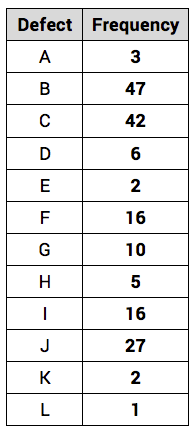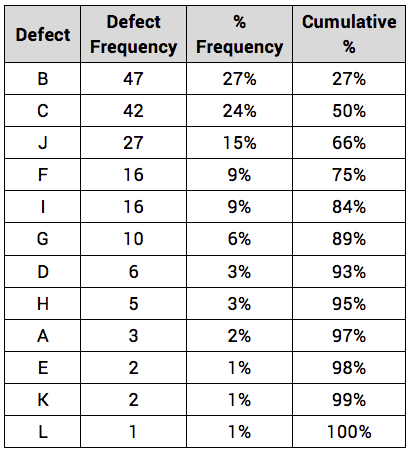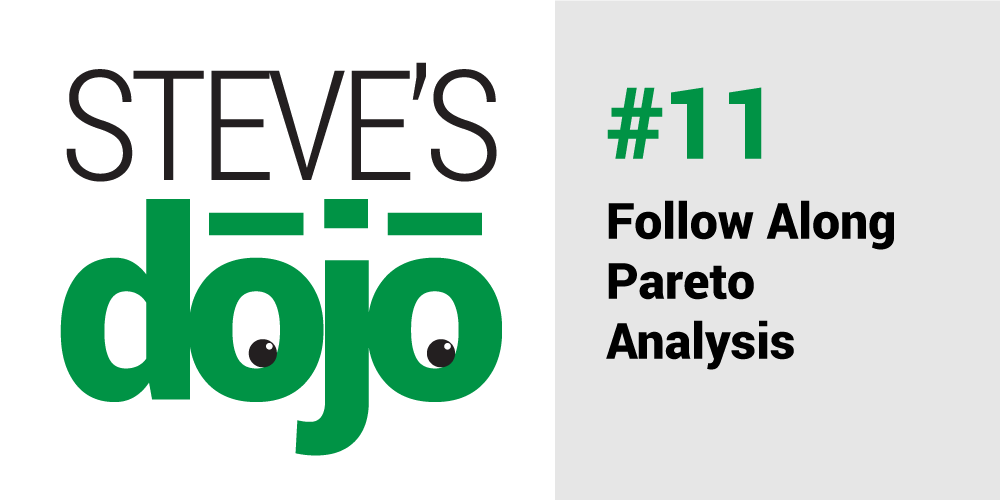et’s say you’re leading an effort to reduce process defects. 12 varieties (A-L) come to light from a brainstorming session. Dr. Allen is absolutely alarmed by defect A and swears it’s the biggest problem. Dr. Davis says defect D deserves our dedicated effort first. However, neither provides supporting data. To prioritize, you build a Pareto analysis.
You start with 1,231 records. (Click here for the pretend data set)
With a little pivot table work, you arrive at this table:

Sort it by frequency (high to low) and add percent frequency and cumulative frequency which should accumulate to 100%:

The graph goes a long way toward demonstrating the magnitude of the separation between vital few and trivial many, which is why we bother to build it. Nonetheless, you can make important observations without a graph. Try it out:
At this point you’d remind your team that, “data drives decisions, but people make decisions.” That is, the team would be wise to consider:
- Severity: Drs. Allen’s and Davis’s focus on defects A & D may cause long term health issues while defect B may cause our employees minor inconvenience.
- Feasibility of preventing each variety: It’s easier to prevent problems we cause ourselves rather than those caused by another department or by patients.
- Likelihood of discovery: Defect J might lay undiscovered for days causing havoc downstream while defect C is known as soon as it happens.
Steve Johnson
Hospitalist Ryan Murphy introduces quality improvement (QI): The systematic and continuous approach to improvement.
Improvement science is about making everyday tasks easier and faster. This week, Steve uses the 6-phase value improvement methodology to build a highly-reliable morning routine.
This week, Steve describes a genius (yet simple) data collection tool: the check sheet. Colline Prasad and the SSTU nursing team used check sheets in their work reducing call lights, a project that turned out to be a triple-win; an intervention that improved patient perception of responsiveness, increased patient safety, and decreased nurse distraction.
